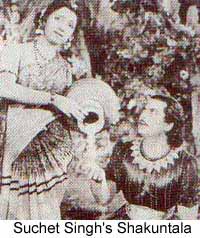

 |  |
|
|
|
At the turn of the 20th century, when the country was poised for major social and political reforms, a new entertainment form dawned in India - the Cinema. The first exposure to motion pictures, which India received, was in 1896, when the Lumiere Brothers' 'Cinematographe unveiled six soundless short films at Watson Hotel, Esplanade Mansion, Bombay on July 7.  The first exposing of celluloid in camera by an Indian and its consequent screening took place in 1899, when Harishchandra Bhatvadekar (Save Dada) shot two short films and exhibited them under Edison's projecting kinetoscope. Hiralal Sen and F.B. Thanawalla were two other Indian pioneers engaged in the production of short films in Calcutta and Bombay in 1900. Around 1902, J.F. Madan and Abdullah Esoofally launched their career with Bioscope shows of imported short films. In 1912, N.G. Chitre and R.G. Torney made a silent feature film Pundalik which was released on May 18, and it was half British in its make. Dhundiraj Govind Phalke, more generally known as Dada Saheb Phalke was responsible for the production of India's first fully indigenous silent feature film Raja Harishchandra which heralded the birth of the Indian film industry. The film had titles in Hindi and English and was released on May 3, 1913 at the Coronation Cinema, Bombay. In 1917, Bengal saw the birth of its first feature film - Satyabadi Raja Harishcbandra made by Madan's Elphinstone Bioscope Company. In Madras, Nataraja Mudaliar made the first feature of South India Keechaka Vadham in 1919.
The most remarkable thing about the birth of the sound film in India is that it came with a bang and quickly displaced the silent movies. The first Indian talkie Alam Ara produced by the imperial film company and directed by Ardeshir Irani was released on March 14, 1931 at the Majestic Cinema in Bombay. The talkie had brought revolutionary changes in the whole set up of the industry. The year 1931 marked the beginning of the talkie era in Bengal and South India. The first talkie films in Bengali (Jamai Shasthi), Telugu {Bhakta Prahlad) and Tamil (Kalidas) were released in the same year. Continue..... |
Copyright ©2000 indiansaga.info. All rights reserved.
By using this service, you accept that you won't copy or use the data given in this website for any commercial purpose.
The material on indiansaga.info is for informational & educational purpose only.
This site is best viewed at 800 X 600 picture resolution.